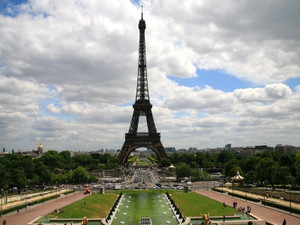
It’s been called The Light of Asia by ancient writers, and Ephesus today is a romantic getaway and a remarkable monument to Greco-Roman architecture.
Sitting on the top step of the Great Theatre, and another small tour group walks onto the main stage and it’s difficult to make out where they’re from, or even whether they’re male or female, from such a distance.
One of them breaks away from the group and stands at the front of the stage and begins singing an operatic piece. The sound is crystal clear and everyone in the Theatre stops and listens to the remarkable sound, and the classically-trained voice.
As quickly as she started, the woman stops and rejoins the tour group which is whisked off to the next major site. The acoustics in the Great Theatre obviously haven’t changed much in two thousand years, along with the amazing structure itself.
It’s the centrepiece of Ephesus, the best preserved Aegean antiquity and its intact state makes it one of the most important archaeological sites in the world - wandering the smooth marble streets gives a very real sense of what life was like in ancient Greece or Rome.
Founded around 3000BC, the empires of Greece, Persia, Rome, Byzantium and the Ottoman Turks all reigned over Ephesus and at its peak in the second century AD it was the second largest city in the Roman Empire.
At that time it was home to more than 250,000 people and was one of the most important ports in Europe with goods passing through from Asia to Greece and Italy.
Perhaps the city’s greatest claim to fame is its temple to the goddess Artemis, which is one of the Seven Wonders of the Ancient World. It was almost four times the size of the Parthenon in Athens and sadly today only a few original columns remain.
Despite that, there is still enough ancient grandeur in Ephesus, including the Great Theatre which is built into the side of a hill and seated 25,000 people at one stage. It sits near Harbor Way and it’s hard to believe that Ephesus once had a harbour, as it’s now about 8km from the ocean, which silted up over time and perhaps led to the city’s ultimate demise.
It only takes about half a day to explore Ephesus and it’s worth paying for an English-speaking guide or buying a guide book, and the best place to start is at the Magnesian Gate which is at the top of a hill. It means the exploration of the city is mostly a downhill walk which is an absolute godsend especially if the weather is hot, as it usually is.
Walking along Curettes Way, lined with the remains of a colonnade that shaded pedestrians, and ahead is another of the highlights of Ephesus, the Library of Celsus.
he grand marble road leads down to one of the largest libraries of the ancient world which contained between 12,000 and 15,000 scrolls. The library was built between 110AD and 135AD in memory of Roman Senator Celsus Polemeanus, who was Proconsul of the Province of Asia.
The facade of the Library has been restored to its original condition and its importance is that it’s one of the few remaining ancient Roman libraries which mostly followed the same classical architecture. At the entrance to the Library is a 21 metre wide courtyard paved in marble, and nine wide marble steps lead up to the main entrance. The tomb of Celsus remains inside and his life is celebrated in Greek and Latin on the bases of statues on each side of the library staircase.
Elsewhere, other ruins include the Odeon, a small theatre built around 150AD which hosted smaller plays and concerts for up to two thousand people. It originally had a closed roof and the upper part of the theatre was decorated with red granite pillars.
The Temple of Hadrian on Curettes Way was also built in the second century and is one of the more beautiful ruins that can be seen and inside the temple is a relief of Medusa, and a frieze depicting gods and other mythological figures connected with the city.
The Temple of Domitian is on a square where shops and stores once flourished and this was one of the biggest temples in Ephesus, and the State Agora or Town Hall occupies a massive piece of land which included a courtyard which led into the main building and contained different rooms and halls where city officials met.
But this is all just 15% of the city and excavations are continuing, with experts predicting that the project which began at the end of the 19th century will continue for “hundreds of years more”.
When To Go:
Temperatures at Ephesus can hit 45C and above in July and August which makes negotiating the ancient city very hard work. Even outside these times it can get very hot and sunscreen and water are a must to avoid sunburn and dehydration.
Currency:
Currency is the Turkish Lira, although Euros are widely accepted. Entrance to Ephesus is with Turkish Lira only, and costs around $15.
- By:
- Ben Hall













